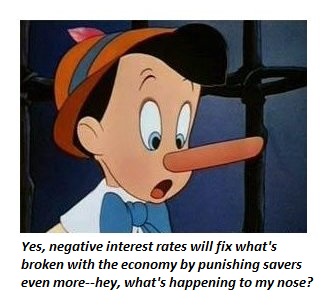How Systems Break: First They Slow Down
Alternatively, we can cling to a state of denial, and the dominant system will be replaced by arrangements that are not necessarily positive.
The reality that cannot be spoken is that all the financial systems we believe are permanent are actually on borrowed time. One way we can judge this decline of resilience is to look at how long it takes systems to recover when they are stressed, and to what degree they bounce back to previous levels.

Another is to look at the extremes the system reaches without returning to “normal”: for example, interest rates, which rather than normalizing after seven years of suppression are being pushed to negative rates by increasingly desperate central bankers.
The key insight here is that financial systems and indeed economies function as natural systems. Central planning/central banker manipulation appears to control the system, but this control masks the reality that the system is increasingly fragile and prone to collapse, not just from internal dynamics but as a direct result of central bank manipulation.
The warning signs of fraying resilience are all around us.
Nature’s Warning Signal: Complex systems like ecological food webs, the brain, and the climate all give off a characteristic signal when disaster is around the corner.
“The signal, a phenomenon called ‘critical slowing down,’ is a lengthening of the time that a system takes to recover from small disturbances, such as a disease that reduces the minnow population, in the vicinity of a critical transition. It occurs because a system’s internal stabilizing forces—whatever they might be—become weaker near the point at which they suddenly propel the system toward a different state.”
Recent email exchanges with correspondent Bart D. (Australia) clued me into the Darwinian structure of this critical slowing down and loss of snapback (what we might call a loss of reslience).
…click on the above link to read the rest of the article…